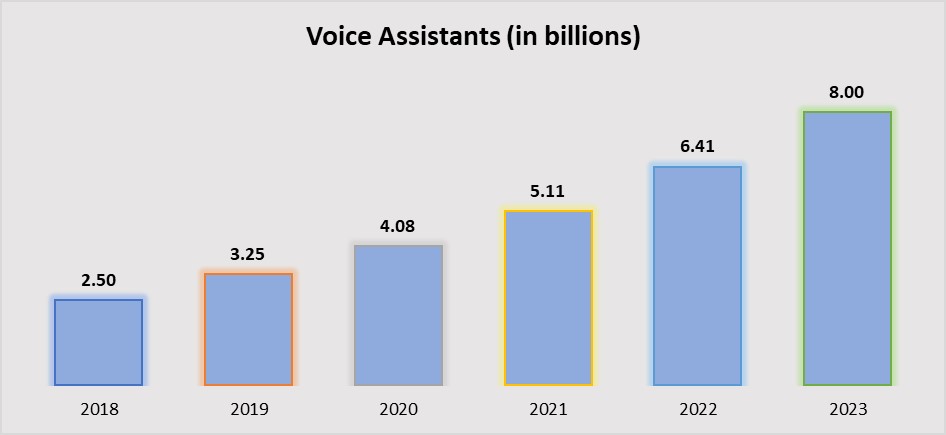I was recently invited to a friend’s house for dinner. There were six of us having a casual conversation about cinema. My friend Josh asked, “Which movie that was based on a book is your favourite?” We all selected The Godfather. What we couldn’t agree on, though, was the year it was released. Tim and I were sure it came out in 1972, but Sara insisted that 1973 was the year. Then Ann, the host, said: “Alexa, what year was The Godfather part 1 released?”
The most interesting thing in this conversation is not that there are people who do not know that The Godfather was released in 1972, but that we have reached a point where conversational bots are integrated into our lives and take part in our conversations naturally and unconsciously. When people are having a heated debate and are trying to convince others, they will use any possible way to prove they are right. They might state facts from memory, search online, use body language, phone a friend, or ask the audience. The addition of voice assistants to casual conversations is an indication of technology acting as an assistant to the human thinking process and communication routine.
Market Penetration
Technology giants are competing to get a bigger slice of the voice-user interface (VUI) pie, creating platforms that consumers can use for a broad range of everyday voice-driven purposes. Amazon has Alexa, Google has Google Assistant, Apple has Siri, Samsung has Bixby, and Microsoft has Cortana. The market penetration is quite impressive. According to Juniper Research, the estimated there were 2.5 billion voice assistants in use at the end of 2018. That number is expected to triple by 2023 to 8 billion.

This trend, along with the high adoption in countries such as the United States, the United Kingdom, Canada, and Australia, suggests that we are moving from the early adopters to the early majority stage in the product adoption curve. For the publishing industry, this rapid growth of voice technology and the consumers’ shift toward voice-driven applications might be a bit challenging, but at the same time it creates a huge opportunity for innovation and growth.
The Challenge
The biggest challenge for the publishing community is probably the fact that they need to move fast to adapt to the new technology-driven era that requires digitization of businesses and brands. Publishers should be ready and make their content suitable for voice search and for other natural language processing applications. In the digital age, consumers want to have access to information in seconds and search engine optimization requires brands to be well positioned in the market and make sure their products are effortlessly discoverable and accessible.
Disclaimer: This is to inform readers that the views, thoughts, and opinions expressed in the article belong solely to the author, and do not reflect the views of Amnet.
Copyright © 2020Amnet. All rights reserved. No part of this publication may be reproduced, distributed, or transmitted in any form or by any means, including photocopying, recording, or other electronic or mechanical methods, without the prior written permission of the publisher, except in the case of brief quotations embodied in critical reviews and certain other non-commercial uses permitted by copyright law. For permission requests, write to John Purcell, Executive Editor- Amnet, addressed “Attention: Permissions” and email it to: [email protected]
